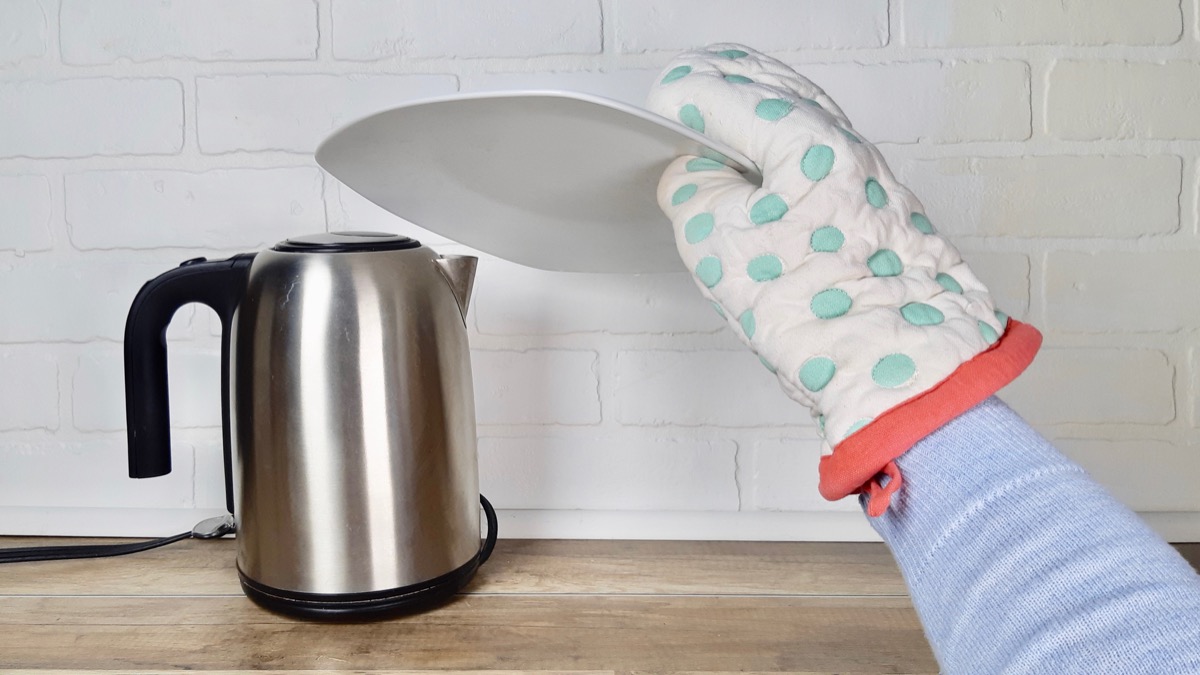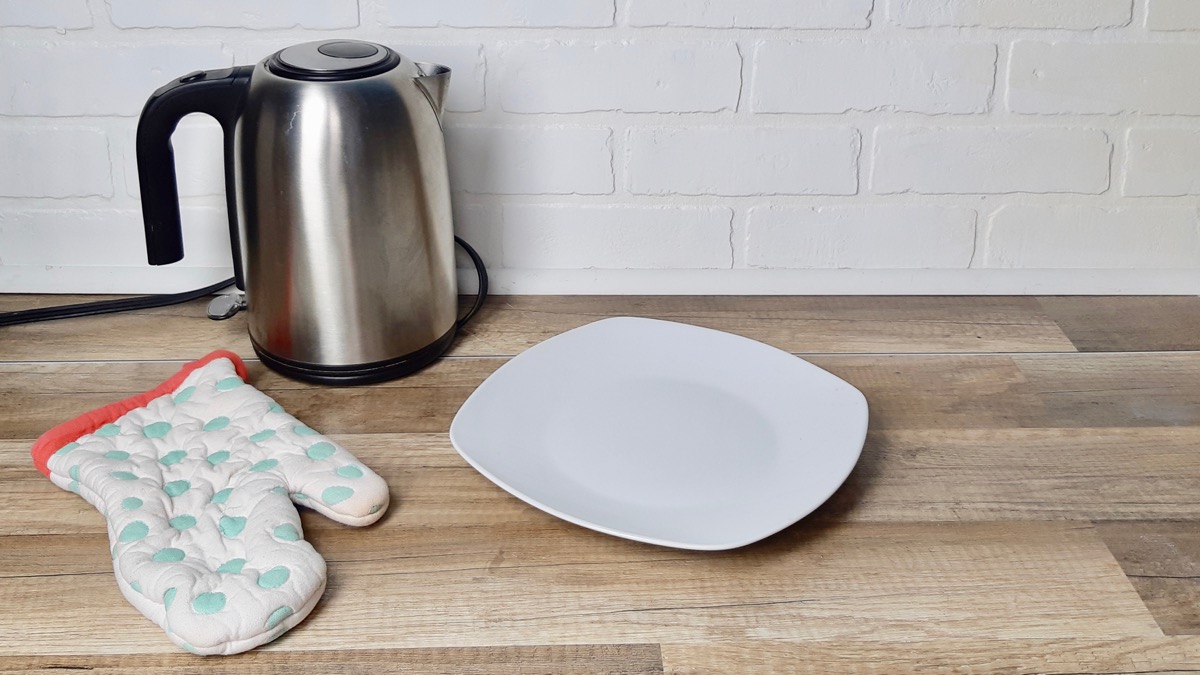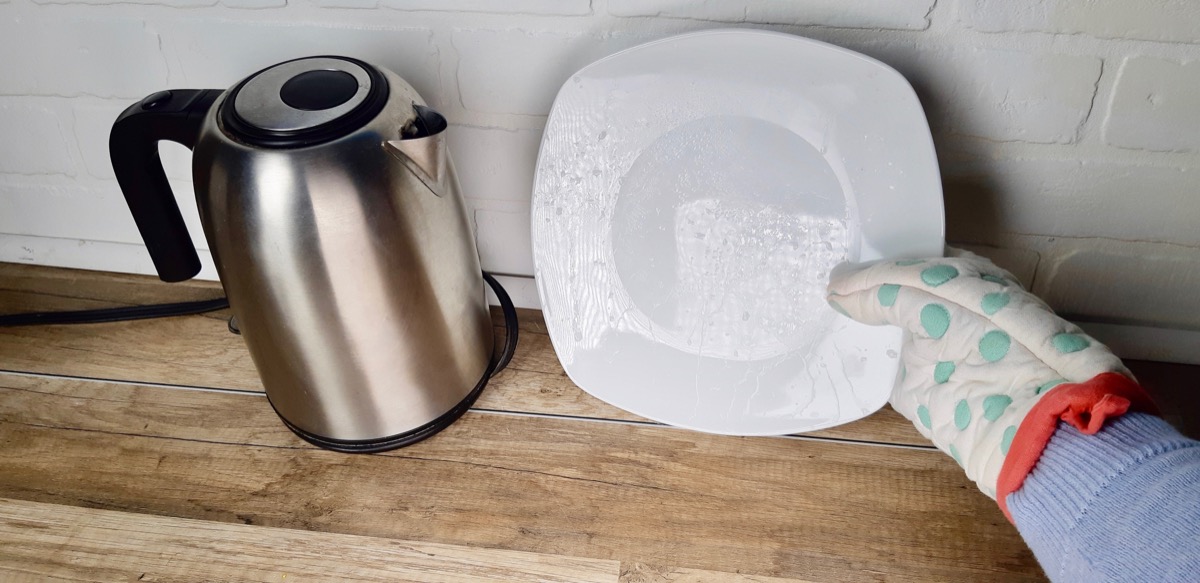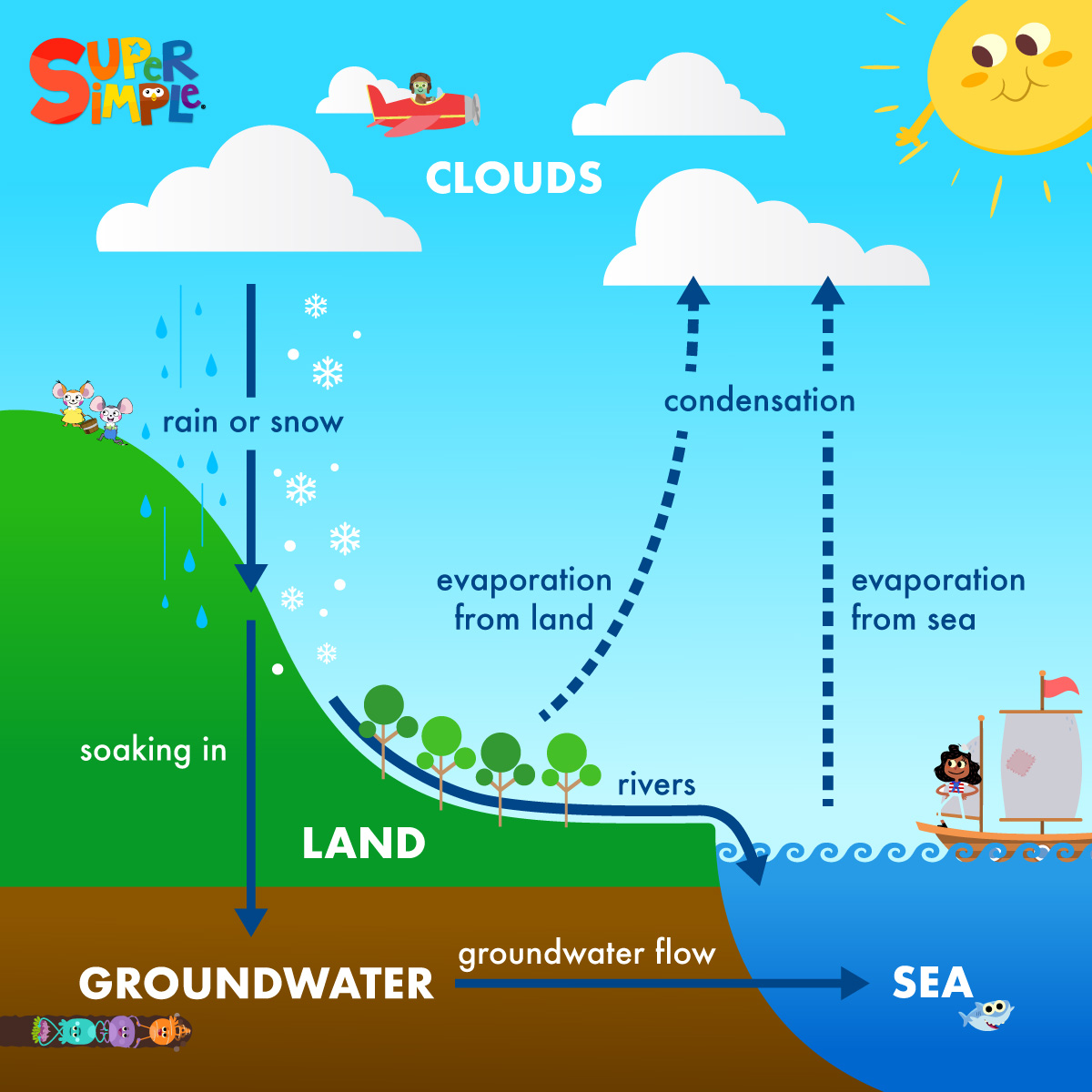
Did you know that you can make it rain in your own kitchen? Here’s what you need:
- Plate
- Refrigerator
- Water
- Kettle

First, put the plate in the refrigerator overnight. It needs to be nice and cold for this activity.
With an adult’s help, fill the kettle with water and turn it on. When it starts to boil, hold the cold plate upside-down, a couple of inches above the kettle’s spout. Be careful, because steam is really hot!
Watch what happens as the steam from the kettle hits the plate. You’ll notice that it’s turning back into liquid water, and gathering on the plate. Eventually, it will start dripping off. It’s raining!

This is the same way that rain works in nature, but to understand what’s going on, there are two words you need to know. When a liquid changes to a gas, that’s called evaporation. When a gas changes to a liquid, that’s called condensation.
Water evaporates from the land, from the sea, and from plants as they breathe. It changes from liquid to gas (called water vapour), and rises up into the sky.
High in the sky, water vapour sticks to tiny particles of dust, and condenses back into liquid droplets. These droplets are so small that they don’t fall, but stay suspended in the air. A cloud is a whole bunch of these suspended water droplets.
As more and more water vapour joins the cloud, the droplets begin to stick together, and eventually they become too big and heavy to stay in the sky. This is when they fall to the earth as rain (or snow, depending on how cold the air is).
The same thing happens during this experiment in your kitchen. Boiling water in the kettle changes it from liquid to gas (like evaporation, but faster). When the water vapour hits the cold plate, it condenses back into liquid. When there’s enough of it, it falls.
When water hits the ground, some of it runs off the land into rivers and lakes, which eventually flow into the ocean. Some water soaks deep into the soil, and deep into cracks in rock, and becomes groundwater (the water we get from wells). And some water is drunk by plants and animals. Then it evaporates again and returns to the clouds.
The movement of water around the planet is called the water cycle. Most of the planet is covered in water – instead of planet Earth, maybe it should be called planet Water – and the water is in constant motion. The same water has been going around and around since the earth began, so the water we drink is the same water that the dinosaurs drank!

The ocean is full of tiny floating plants called phytoplankton. When the wind over the ocean is strong, phytoplankton that are on the surface can be tossed into the air, and they’re so small that updrafts blow them high into the sky. Some of these phytoplankton produce a gas that causes the water vapour around them to condense into clouds. When these clouds produce rain, the phytoplankton fall back to earth with the raindrops, far, far away from where they started.
So, some scientists think that clouds were invented by phytoplankton as a way to get from one place to another!
Tune in tomorrow to Caitie’s Classroom at 11am EST Live on our Super Simple Songs YouTube channel to learn more about the rain!
Don’t forget to follow us on Twitter, Instagram, Pinterest, and Facebook!
Original content © 2019 Super Simple. Not to be reprinted without express written permission. Terms of Service.

